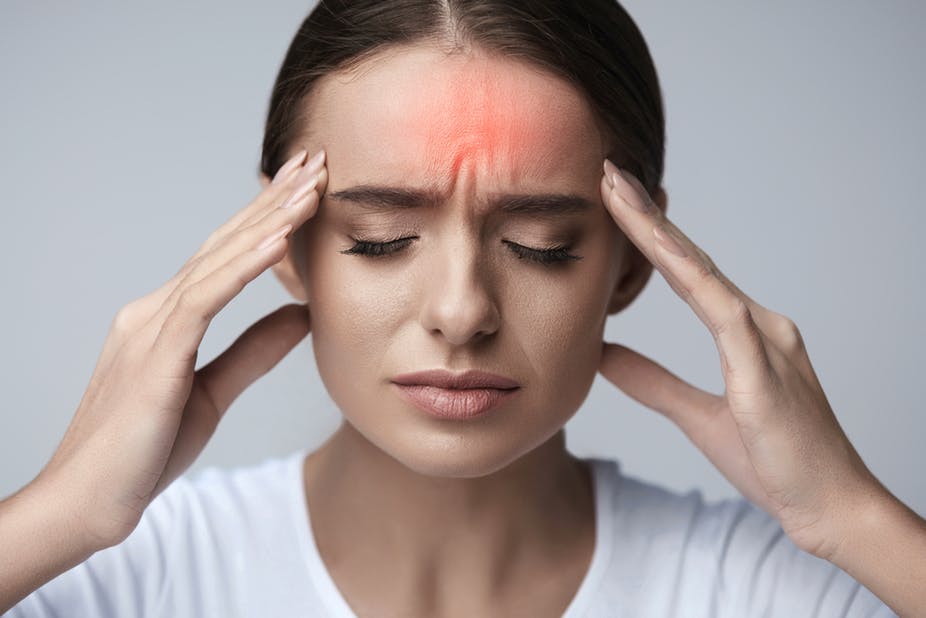What’s the difference between migraine and tension-type headaches?
Migraine symptoms are typically “pulsating” in nature and often affect one side of the head. In many presentations there’s associated nausea, vomiting, sensitivity to light and/or even noise. Not all of such symptoms are present in migraine cases, often only one or two are.
The aura
A telling characteristic of migraine headaches is what’s called the “aura”. This is a visual disturbance where patients report blurred vision, flashes of light and even blind spots in their vision. 20% – 30% of migraine sufferers have this prior to their headache coming on. The aura typically lasts 10 – 60 minutes.
Tension-types commonly affect both sides of the head and can vary greatly in intensity. A “pressing” or “tight” sensation is a common pain presentation and is usually triggered by stress, tight muscles of the face and neck and fatigue. Sensory changes, such as the aura (mentioned above) aren’t present. There aren’t usually symptoms of nausea either.
Differences in duration
Migraine headaches can last up to 3 days. When the headache pain eases it’s not unusual to feel lethargic for up to 24 hours. This is known as the “post-dromol” phase of migraines.
Tension-type headaches can last anywhere from hours to weeks or even months in persistent cases, without a post-dromal stage.
NOTE: *It’s important to be aware of migraine and stroke symptoms as they can be very similar in nature. If you’re unsure about any of your symptoms or if your headache is new, it is important to seek quick medical attention.
Tension headaches
Tension headaches can respond well to manual therapy and is often a first line of treatment. Dr. Michael Black will complete a thorough assessment of your pain complaint and will aim to rule out other causes of your headache. He is available for consultation in the Doncaster and Armadale areas.
Private health funds cover chiropractic care and some patients qualify for a Medicare EPC referral if they have a long-standing problem. Chiropractic care has been seen to relieve headache pain for many people without the common side effects of taking drugs. If in doubt about your headache, don’t hesitate to get a chiropractic opinion.

